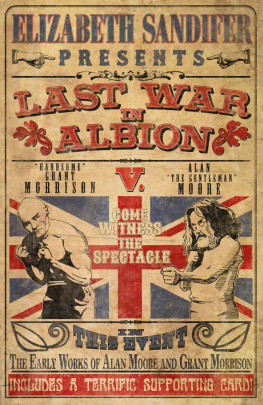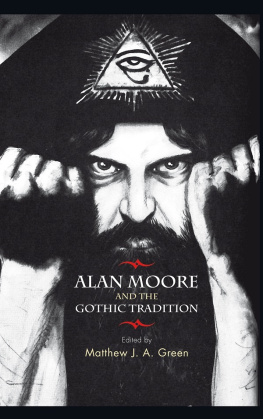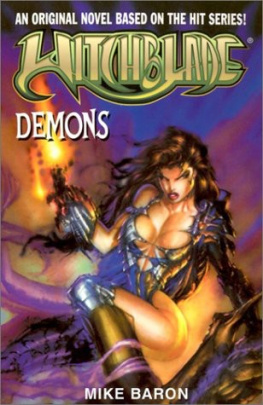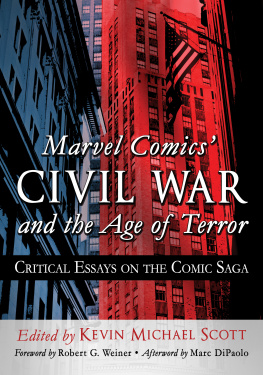Verily,V for Vendetta Validates my Valuation of Vivid Visual Vignettes!
Ever since I was little, Ive loved comic books and the superheroes that populate their pages. Spider-Man, Batman, the X-Men; these were the first heroes I knew, and the heroes that would shape my interests for years to come, from comics specifically to storytelling and narrative in general.
Of course, I grew up in the late 80s and early 90s, and while the stigma had tempered by my time, comics were largely considered to be a territory strictly for losers, for nerds, for kids. As it does for all of us, it came time for me to grow up but comics, my dear childhood treasures, I did not care to part with.
While Spider-Man and his tights-donning cohorts still stayed with me, I yearned for something more, something with more substance. Surely, great minds had dabbled in the medium of comics, and created art. And indeed, I discovered, they had.
Among titles such as Watchmen , Maus , and the Sandman series , V for Vendetta was one of the first comics I read meant for adults, and more so, meant to be art. I became familiar with it through the 2006 motion picture, but in actually reading the book, I was amazed at how intricate the narrative was. One cannot simply sit back and let V for Vendetta happen to you; it forces you to take an active role in your understanding in the material, else you be left in the dust.
With the new-found popularity comics are enjoying today, I feel like the world discovered the true artistic value of comics as I did, and it became a thrilling time to live in. Granted, many of these titles existed before I was even born, but through perseverance, helped to lift the stigma that nothing of value lies in the funny pages. I hope you, dear reader, discover that as well, as you read this Quicklet.
Alan Moore: Comic Savant
You couldnt miss Alan Moore in a crowd if you tried. He looks a bit like a mad wizard, with a wild beard and ornately bejewelled fingers. But his eccentric appearance betrays a wizardry he commands over the written word and, perhaps more importantly, the medium of comics that he helped to shape.
Moore first broke into the field producing zines (independently produced publications) and largely-unpaid freelance work, until his talent slowly but surely grabbed the industrys attention. His early mainstream UK titles, V for Vendetta and Marvelman (later Miracleman ) earned him a cult following he still enjoys today.
Moore broke out big in North America after being handed the failing DC Comics title Swamp Thing and revitalizing it, turning it into an enormously successful work. Moore became a worldwide comic icon overnight. DC handed him the keys to high-profile characters like Batman and Superman, and hired him to write Watchmen , which to this day is one of the most critically-acclaimed comics ever made.
Sadly, in recent years, Moore has distanced himself from mainstream comics over creative and ideological differences. Hes also known for separating himself from film adaptations of his more famous works, for various reasons. He still writes his own titles, such as League of Extraordinary Gentlemen and the more daring, risque Lost Girls . He also dabbles in poetry and other mediums, and has an interest in the occult. Hes been married twice, and has two daughters, Amber and Leah, from his first marriage. He is 58 years old.
About V For Vendetta
V for Vendetta first graced the pages of the British comics anthology series, Warrior , in its flagship issue in 1981. The series continued ther e until 1985 when Warrior ceased publication.
Left in limbo for three years, the series was eventually picked up again in 1988 by DC Comics, one of the worlds largest comic book companies, where the story was completed. Artist David Lloyd provides the art for the majority of the series, though artist Tony Weare contributed to a few issues. Originally in black and white, DC reprinted the original pages in watercolors, and continued to do so until the series came to fruition.
One of Alan Moores first attempts to pen a continuing series, V for Vendetta helped put Moores name on the map. Moore wrote the series as a response to Thatcherism, the form of conservative government in power in the England at the time of the storys creation. The titles popularity lead to Moore becoming more prominent across the pond, which opened the doors for other British comic writers to find new popularity in North America, such as the likes of Grant Morrison and Neil Gaiman, among othersall titans of the industry in their own right.
Today, the book enjoys a great deal of popularity and critical praise, especially in the wake of the 2006 film adaptation starring Hugo Weaving and Natalie Portman, which has earned over $132 million. It has also gone on to have a deeper significance, with protesters donning the Guy Fawkes mask popularized by the title character, especially in the Occupy Wall Street movement.
Overall Summary of V for Vendetta by Alan Moore
V for Vendetta is divided into three books, each with several chapters, all of which have titles featuring words that begin with the letter V.
The story is set in a dystopian future 1997, where nuclear war has destroyed much of the world. Britain, however, survives under the cold, watchful eye of the Norsefire government, a fascist regime that took control amidst the chaos and confusion after the war. Norsefire undertook a campaign of ethnic and social cleansing, and keeps the populace in line through brutal punishment and constant observation through the omnipresent Fate computer system. No one dares oppose the Norsefire government, except one; a mysterious person gifted with enhanced strength, speed, and intelligence. He always wears a Guy Fawkes mask and identifies himself only as V.
V comes across a meek 16-year-old girl named Evey Hammond one night, whom he saves from members of the Norsefire secret police that she naively tried to proposition. V takes Evey under his wing, and forces her live in his secret base, the Shadow Gallery, as he systematically strikes at key members of the Norsefire party.
It is revealed that V was likely the result of medical tests performed on him as an inmate of Larkhill Resettlement Camp that gave him enhanced physicality but also drove him insane. V escaped, and four years later, he targets his former captors and symbols of government oppression until all who could have identified him are dead. However, his vendetta is not merely a simple matter of revengehe means to completely destroy Norsefire and free the people of London.
Evey is content living a carefree life with V, even though she is essentially his prisoner. Sensing potential in Evey that must be awakened, V fakes her capture at the hands of Norsefire and tortures her as he had been tortured, and slips her the notes of a former inmate of Larkhill that inspired his crusade. She becomes inspired as well and, when given the option to choose between her principles and her life, she chooses to die. V reveals the charade to Evey. He did this to free her from the confines of her own fear, and to prepare her to embrace his guiding principle: anarchy. V means to plunge all of London into anarchy by helping the people to find their voice again and topple their masters. All the while, V grooms Evey to become his replacement.
Through increasingly bolder means, V cripples the governments means of control, giving the citizenry the chance to oppose the government themselves. However, most of the partys undoing does not come at the hands of V directly, but rather the people his actions have affected and influenced. The party tears itself apart from the inside over plans of multiple coups, and the leader of Norsefire is assassinated by the disgraced widow of a high ranking party member killed by V. Eventually, the entire city turns against its leaders and the city succumbs to chaos. In the final climax, however, V is killed, and Evey adopts his identity, ready to guide the people of London to rebuild their world anew.








